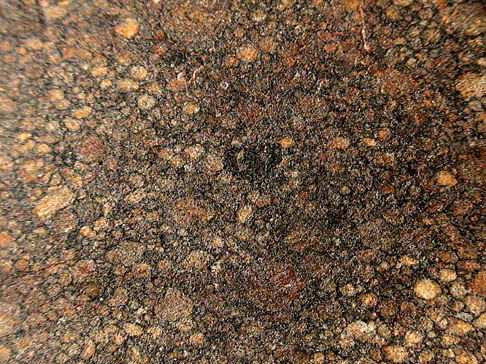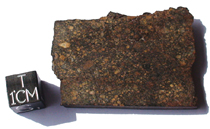L Group
With about 6,500 members (including probable pairings), the chondrites of the L group represent the second largest group of ordinary chondrites. The "L" stands for "low iron" - especially in its free form. L chondrites contain a weight percentage of 20 to 25% total iron, but only 4 to 10% nickel-iron is found as free metal. Therefore, L chondrites are also attracted to a magnet, but much less than their cousins of the H group.
The L chondrites belong to the petrological types 3 - 7, with a characteristic peak at type 6. More than 4,000 have been classified as L6, about 1,300 as L5, just 400 as L4, and only about 300 as L3. Brecciated members that show clasts of several petrologic types do occur, but they are more rare than in the H group. Besides magnetite and nickel-iron, the L chondrites are composed of olivine and the orthopyroxene hypersthene. Consequently, they have been called "olivine hypersthene chondrites" or "hypersthene chondrites" in older literature and papers. However, this name is not fitting modern meteoritics and the Meteoritical Society discourages the use of these names.
When it comes to the origin of the L chondrites it has been suspected
that they might be former parts of the near-Earth asteroid 433 Eros which
has been intensely studied by the spacecraft NEAR-Shoemaker recently. The
reflectance spectra of 433 Eros and the L chondrites seem to match closely
- however, most L chondrites show signs of severe shock metamorphism
suggesting a violent history of its parent body. Maybe the real parent of
the L chondrites was some kind of relative or a former part of 433 Eros
that has been entirely disrupted when it collided with another asteroid.
|
DAG 313
L/LL3 anomalous
Found in 1997 in Libya
TKW : 3.290 kg
|

|
|
|
|
|
|
|
 
|
|
|
|
DAG 313-00
18.77 gr
Nice and thick slice showing a matrix full of chondrules !
Price
on request
|
|
|
|
|
|
|
|